nside Maria Cleudimar da Silva’s flat, gospel music plays softly on the stereo, family photos and religious posters decorate the walls, and a wicker rocking chair and computer furnish the living room. The only evidence of her past life is a faded photo of the home she lived in for 11 years, a shack she called Noah’s Ark for its frequent floods.
She moved in in 1996, pursuing the promise of a better life from Brazil’s rural north-east to São Paulo, its largest city, where she settled in
.
The path to a better life, however, was bumpy. As a squatter, she faced a constant threat of eviction. It was a challenging place to raise her daughter, who has the developmental disorder
.
“The government didn’t treat us like citizens back then,” she says, citing their inability to access regular water, electrical hookups or a health clinic for her daughter.
In 2007, however, things suddenly changed. City officials declared that she and her daughter would be leaving their waterlogged hovel. For three years they received financial assistance that allowed them to rent a nearby house, before taking ownership in 2010 of a brand new two-bedroom flat, for the modest 10-year price of 86.90 reais (£18.46) per month plus utilities – a sum she pays with cleaning jobs and her daughter’s disability checks.
An aerial view of Paraisópolis, the biggest favela in São Paulo. Photograph: Paulo Whitaker/Reuters
“It was complicated but worth it. We have a better life,” she said, gazing out from her balcony over the lush tropical landscaping that separates the blocks in this development. “I keep that photo so that I never forget what God delivered me from.”
Silva and her daughter are among the 4 million Brazilian families in the last 15 years who were given a new roof over their heads in one of the most ambitious social housing and neighbourhood building schemes attempted in the 21st century.
built homes, renovated public spaces, and laid out new transport lines in cities large and small across the vast country.
For their new lives, the Silvas can thank a distant bureaucracy: the ministry of cities. The creation of the former president Luiz Inácio Lula da Silva, the ministry was set up to tackle the urban chaos of Brazil’s traffic-clogged megacities and prevent its intermediate cities from ballooning into nightmarish metropolises.
Maria Cleudimar da Silva and her daughter on the balcony of their flat in São Paulo; she holds a photo of the wooden shack she lived in before the government built her current home. Photograph: Greg Scuggs
Or at least, they could have thanked the ministry until January this year, when the new president,
, closed it down, ending 15 remarkable but highly contentious years. “The ministry of cities is done,” parliamentarian Luciano Bivar, a Bolsonaro ally, said in October about folding the cities remit into the ministry of regional development. “We’re going to have a direct line with the cities and states.”
It was a quiet end to a project that was opened in 2003 to great fanfare. Replacing the separation of city planning into different silos, the ministry was in charge of all things urban: housing, transport, sanitation and planning. It was a first-of-its-kind innovation in public policy for tackling cities writ large.
champion Olívio Dutra, former mayor of Porto Alegre, took the helm and flung open the doors to urban reformers with progressive ideas. These include the “right to the city” concept, which put the needs of poor urban dwellers on par with the rich, and the “social function of property”, whereby land should not sit vacant if it can serve a public purpose.
Over the last dozen years of the programme, between its general infrastructure programme (the PAC) and its My House My Life programme (
, MCMV, in Portuguese), Brazil invested a staggering 780bn reais (£166bn) in housing alone. There were also sewage upgrades, transport improvements and huge renovations to Brazil’s many favelas.
In 2006, the United Nations human settlements programme, UN-Habitat, awarded the ministry its scroll of honour for “impressive work in promoting the participation of ordinary people in urban policymaking”. Indeed, on Dutra’s second day, he invited the representatives of social movements from across Brazil into the ministry for discussions that aimed to make Brasília more responsive to the needs of the country’s far-flung cities.
The honeymoon, however, was short-lived. Housing successes, such as the Silvas’ experience, started to become the exception rather than the rule. As huge amounts of federal money poured into housing, the ministry found itself overwhelmed, struggling to exert any power over quality. The result was often shoddy housing estates and more urban sprawl than ever before.
The results soured even the ministry’s most ardent backers. One of them was an urbanism professor at the University of São Paulo, Ermínia Maricato, who had pitched the project to Lula personally. “I don’t want to use this word, but it’s a tragedy,” she now says.
‘A profound lack of knowledge about urban space in Brazil’
What transformed this urbanist dream into a tragedy is money – a lot of it.
In the early 2000s, Brazil’s housing deficit was enormous. The country needed an estimated 7 million units, and nearly a fifth of the population lived in inadequate housing – families crammed into hillside favelas at risk of landslides, degraded tenements in big cities, or illegally subdivided lots lacking basic water and sewer connections, often located far from any jobs.
On top of the housing shortage, navigating Brazilian cities ranged from infuriating to nightmarish. Metropolises such as São Paulo and Rio de Janeiro enjoyed a fraction of the metro service of comparably sized metropolises such as London and New York. The smaller cities, such as Belo Horizonte, Porto Alegre and Fortaleza – which still clock in at more than a million people – relied almost exclusively on buses. Six Brazilian cities feature in the top 50 of the INRIX global scorecard for world’s worst traffic congestion.
“The problem isn’t the house, it’s the city outside the front door,” Maricato recalls telling Lula when she pitched to him the idea of turning a housing plank in his 2003 campaign into a proposal for a fully-fledged city ministry.
Lula liked the idea, which came from a national movement of urban reformers calling for urgent federal action to fix Brazil’s increasingly chaotic metropolises. When he won the election and entered office, he made Maricato the new ministry’s first executive secretary.

A packed subway platform in downtown São Paulo. Photograph: Nacho Doce/Reuters
Untangling the knot of Brazilian cities, where up to half of the urban population lives in self-built housing or illegal subdivisions, needed all hands on deck. As Maricato points out, Brazil had gone from being 10% urban in 1900 to 80% urban by 2000.
“We spent 400 years as a predominantly rural society,” she says. “Rapid urbanisation was an overwhelming experience, and frankly there existed a profound lack of knowledge about what urban space really was like in Brazil.”
Maricato and the ministry attempted three initiatives: build a lot of new housing, renovate existing housing stock, and upgrade favelas with paved roads, water and sewer hookups, parks, schools, health clinics and other amenities. Hundreds of new kilometres of subway and bus rapid transit (BRT) lines were also part of the equation, although the cities ministry shared that responsibility with other parts of the federal government.
In 2008 new, massive amounts of money came down the pipe, as the chief of staff and finance ministry authorised huge public spending on construction in a bid to keep Brazil afloat in the global financial crisis, leaving implementation to the cities ministry.
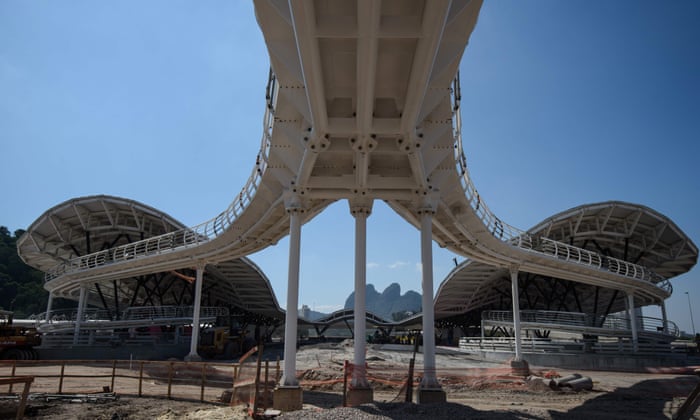
The TransOlimpica highway, part of the bus rapid transit system, under construction in 2016. Hundreds of new kilometres of subway and BRT lines were overseen by the ministry. Photograph: Yasuyoshi Chiba/AFP/Getty Images
Some of the money went to new homes, where Silva’s story represented an ideal outcome: a life-changing new home in the neighbourhood she already lived in.
Some of the money went to rehabilitating existing buildings, typically to benefit homeless people or those paying exorbitant sums to live in shoddy rentals. A particular success was when social movements convinced the cities ministry to use part of MCMV’s massive budget to transform
central São Paulo’s abandoned high-rises into proper apartment buildings, where squatters successfully parlayed their activism into permanent homes, renovated with public money.
“We sometimes hear parents joke with their children to ‘be careful, this is a luxury condo’,” says Wemerson Silva, a 33-year-old former office administrator now working full-time to manage the 120-unit Edifício Dandara, which used to be a squatter building. “But for us it
is a luxury. I’ve lived in a tenement – never again.”
The building once housed a justice ministry office but sat vacant for a decade until a tenement dwellers’ union took it over. Many of the new residents had been used to paying up to half their income to rent sparsely furnished, cell-like rooms in tenements, where siblings or a mother and child crammed in together and the bathroom was shared by a dozen strangers.
In their new building, the union applied to the government to finance a participatory renovation project through MCMV. Today, they are all owners of one- and two-bedroom flats in a building they helped lay out, and pay just 5% of their income for 10 years with no down payment.
As building manager, Silva has faced a steep learning curve. The cities ministry literally handed over the keys: the residents would own the building, not rent it. The residents get the dream of homeownership, but also the responsibility of maintaining their new condominium complex.
“During carnival a street party passed right by the door, but I was busy taking care of the building,” Silva says. “Every day there’s a new problem. The front gate is always breaking.”
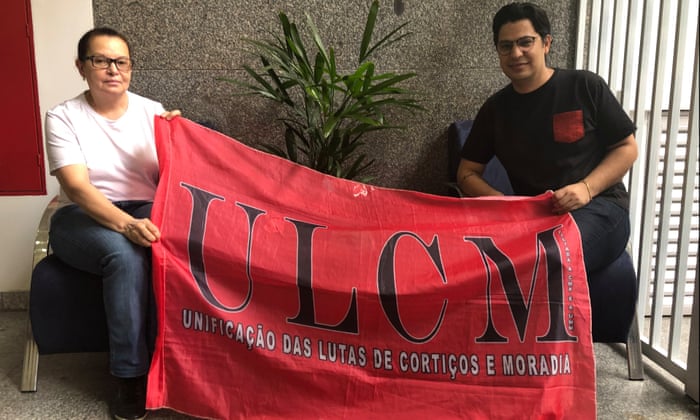
Marli Baffini (left) and Wemerson Silva went from living in tenements to managing the board of Edifício Dandara, a downtown São Paulo building. They hold the banner for the tenement dwellers’ organisation that lobbied the ministry for finance. Photograph: Greg Scuggs
There were social habits to change, too. Visitors would often come to the front desk looking for a friend without knowing their last name. “Come on, there are 500 residents,” Silva says. “If the person doesn’t come with the apartment number, they don’t get in.”
Located in the middle of downtown, Edifício Dandara is walking distance from jobs, prime subway service, museums, grocery stores, and the city’s
new top public cultural and recreation centre.
“Sometimes I don’t sleep at night thinking about how surreal it is to own a flat in the centre of São Paulo,” Silva says. “I never could have afforded to buy here.”
But as successful as it has been, only 30 such downtown buildings were renovated in São Paulo – and fewer in all other cities.
“Each building became artisanal and that’s difficult to do at scale,” acknowledges Evaniza Rodrigues of the Union of Housing Movements, UMM, which pushed the ministry of cities to rehabilitate abandoned buildings. While occupations continue apace, especially in São Paulo, the loss of a federal partner willing to invest in renovation has made the provocative strategy’s end game less clear.
As well as new and renovated housing, the third major plank of the ministry of cities programme was favela upgrading.
Since the late 19th century, when the first favelas popped up to house poor Brazilians, most cities have at best ignored and at worst evicted favela dwellers. In the 1980s and 90s, Rio pioneered a different attitude that eventually became a national trend: investing public dollars in favela improvements.
It provided land titles, paid favela residents cash for their “sweat equity” investment, and went as far as designing and implementing infrastructure improvements outright, including sidewalks, paved roads and alleys, water and sewer lines and handrails for staircases. Historically, the federal government had left favela upgrading to state and city governments, but during the ministry’s flush years, Brasília got involved, too: it put 33.5bn reais into more than 3,500 favelas nationwide.
Outside the gated entrance to Silva’s council estate, Paraisópolis now sports a paved avenue served by city buses connecting its tens of thousands of residents to the rest of the city. A new health clinic, school and job training centre flank the roadway. Inside Paraisópolis’s narrow streets and alleys, meanwhile, business is booming as banks, restaurants and shops vie for customers. In short, the former favela has become a neighbourhood – the ultimate goal of favela upgrading.

A bus plies the main drag connecting the favela Paraisópolis with the rest of the city – transit that only came about as a result of improvements overseen by the ministry. Photograph: Greg Scuggs
José Maria Lacerda, 65, moved to Paraisópolis in 1975, when he estimates there were about 10,000 shacks on an abandoned farm. Back then, the government provided no utilities or infrastructure whatsoever. “We used candles at night,” he said.
Today Lacerda and his wife run the residents’ association, a busy job representing an estimated 100,000 people. “I consider my neighbourhood to be a city,” Lacerda says. The favela residents still face eviction pressure, particularly from their well-heeled neighbours, including a recent spate of
suspicious arsons. But the decade of investment was a boon for Paraisópolis. “Today we have everything,” he said. “I’m proud to live in Paraisópolis.”
He is worried that the death of the ministry means the money has run out. There is more work to be done – more housing needed, a drainage project that never panned out. Without the ministry, he fears for the worst. “The city [alone] didn’t have the capacity on its own to do all this,” he says.
If favela upgrading generally went well under the ministry, it was the colossal housing production that tarnished its reputation the most. To achieve the 7m unit goal, the ministry allocated 94% of its housing budget to private construction companies, who worked with municipal governments to select sites. It agreed to pay up to 98,000 reais per unit, and set only basic parameters of minimum unit size and requirements for water and sewerage.
The result was quantity over quality. Construction firms sought to maximise profit within the fixed sum and built inadequate housing on the edge of town where land was cheap, all abetted by local governments. “Cities zoned lots of farmland for urban development and MCMV projects ended up built in areas that a few years ago were rural,” Maricato says. “We did some excellent projects, but a lot of sprawl came out of the ministry of cities. The money went to build roads out to empty land.”
The success of Paraisópolis was an exception. In most places there has been not improved density but vast new sprawl, from
Recife to
Florianópolis. Some residents abandoned their new homes and
returned to their favelas. Journalists have documented serious abuses on the part of corner-cutting construction companies and lax city and federal oversight. On a former patch of Amazon rainforest on the northern edge of
Manaus, 55,000 people live in a crumbling council estate that was the country’s largest MCMV project, where falling roofs and constant leaks have rendered the estate’s name, “Living Better”, a cruel irony.
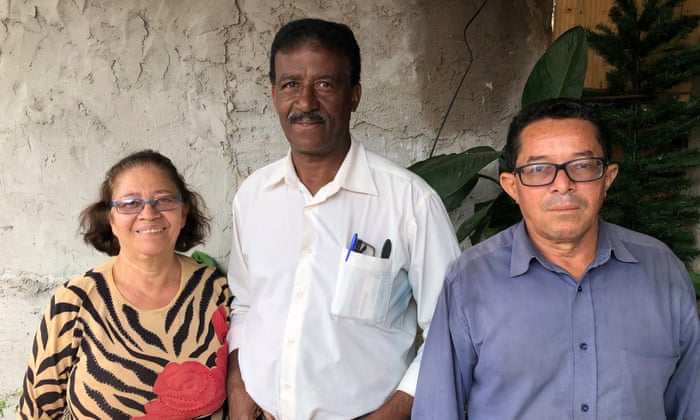
From left to right, Maria Betania Ferreira Mendonça, José Maria Lacerda, and Lourival Zacarias Alves, leaders of the Paraisópolis residents association. Photograph: Greg Scuggs
Rio, meanwhile, used the programme as a pretext for forcibly evicting thousands of favela residents ahead of the World Cup and Olympics. And in the very first MCMV estate in Bahia,
organised crime and paramilitaries rule the roost.
Maricato blames collusion between the real estate industry and local elected officials for the disastrous results. “As soon as real money showed up in the cities, democratic forces lost out,” she says.
Worse, the federal government’s injection of a huge subsidy into the housing market had another unintended consequence: rents shot up. As a result, millions of Brazilian renters now find themselves burdened.
Today, despite the ministry building 4 million units, the country’s housing deficit stands at 7.7 million units – higher than it was when the whole project started. “What kind of math is this?” Maricato asks in frustration.
There is no longer any time to fix the worst mistakes. Bolsonaro, whose conservative populism has sought to undo many of his predecessor’s legacies, folded the ministry on his first day in his office, as part of a sweeping cabinet reshuffle that also saw mainstay portfolios such as culture, sports and social policy folded into larger bureaucracies.
The decision was the final nail in the coffin after two years of steep cuts to the flagship housing and infrastructure programmes that enabled the ministry to build so much and reshape Brazilian cities – for good and for ill. The money had already been slashed by former president Michel Temer, who took over after the 2016 impeachment of Dilma Rousseff, and new housing for Brazilians on the lowest incomes was effectively halted.
With Brazil’s cities in dire straits once again, the country’s mayors joined forces in May to plead with Bolsonaro to reopen the ministry. He signalled he was open to the idea, though his conservative deputies insisted such a move would renege on the president’s promise to shrink the size of Brazilian government.
In the meantime, the cities may have to fend for themselves without a national champion. Many officials acknowledge the ministry’s flaws but mourn its passing, such as Paulo Massoca, a civil engineer with the São Bernardo dos Campos housing office, a suburb outside São Paulo. Massoca presided over changes to Jardim Silvina, which won a prize for best favela-upgrading project in Brazil.
Smaller favelas such as Silvina are more common than city-sized ones like Paraisópolis, and under Massoca’s watch the community saw thoughtful interventions – new water and sewer lines underneath newly paved walkways and stairwells, and the moving of residents who were living in areas at risk of flooding and landslides to a new housing estate just a few blocks away, instead of being forcibly evicted to the middle of nowhere.
For public officials working in these smaller municipalities, which enjoy neither the institutional knowhow nor the inflated land values of big cities such as São Paulo, the guidance they received from Brasília was welcome and will be sorely missed.
“The ministry of cities shone a light for the country on how to plan and confront problems on the periphery,” says Massoca. “It was a historic opportunity.”
Follow Guardian Cities on Twitter, Facebook and Instagram to join the discussion, catch up on our best stories or sign up for our weekly newsletter
 Nick Hopkins-
Nick Hopkins-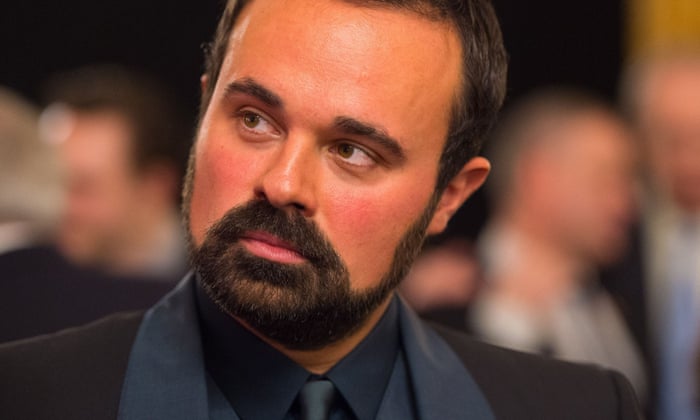 Evgeny Lebedev, owner of the London Evening Standard. Photograph: Dominic Lipinski/PA
Evgeny Lebedev, owner of the London Evening Standard. Photograph: Dominic Lipinski/PA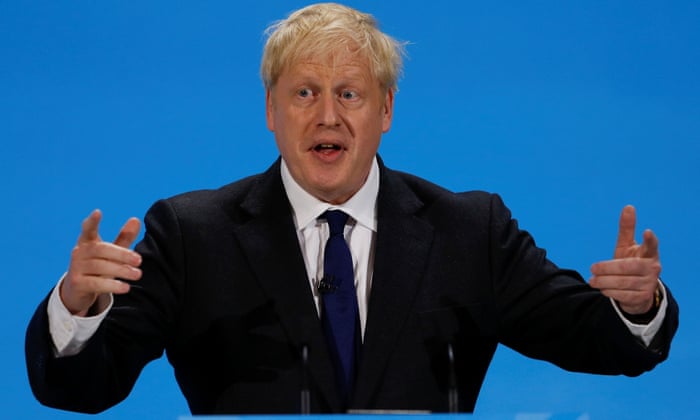 Boris Johnson at a Conservative party hustings event in London on 17 July. Photograph: Peter Nicholls/Reuters
Boris Johnson at a Conservative party hustings event in London on 17 July. Photograph: Peter Nicholls/Reuters












 Maria Cleudimar da Silva and her daughter on the balcony of their flat in São Paulo; she holds a photo of the wooden shack she lived in before the government built her current home. Photograph: Greg Scuggs
Maria Cleudimar da Silva and her daughter on the balcony of their flat in São Paulo; she holds a photo of the wooden shack she lived in before the government built her current home. Photograph: Greg Scuggs
 The TransOlimpica highway, part of the bus rapid transit system, under construction in 2016. Hundreds of new kilometres of subway and BRT lines were overseen by the ministry. Photograph: Yasuyoshi Chiba/AFP/Getty Images
The TransOlimpica highway, part of the bus rapid transit system, under construction in 2016. Hundreds of new kilometres of subway and BRT lines were overseen by the ministry. Photograph: Yasuyoshi Chiba/AFP/Getty Images Marli Baffini (left) and Wemerson Silva went from living in tenements to managing the board of Edifício Dandara, a downtown São Paulo building. They hold the banner for the tenement dwellers’ organisation that lobbied the ministry for finance. Photograph: Greg Scuggs
Marli Baffini (left) and Wemerson Silva went from living in tenements to managing the board of Edifício Dandara, a downtown São Paulo building. They hold the banner for the tenement dwellers’ organisation that lobbied the ministry for finance. Photograph: Greg Scuggs A bus plies the main drag connecting the favela Paraisópolis with the rest of the city – transit that only came about as a result of improvements overseen by the ministry. Photograph: Greg Scuggs
A bus plies the main drag connecting the favela Paraisópolis with the rest of the city – transit that only came about as a result of improvements overseen by the ministry. Photograph: Greg Scuggs From left to right, Maria Betania Ferreira Mendonça, José Maria Lacerda, and Lourival Zacarias Alves, leaders of the Paraisópolis residents association. Photograph: Greg Scuggs
From left to right, Maria Betania Ferreira Mendonça, José Maria Lacerda, and Lourival Zacarias Alves, leaders of the Paraisópolis residents association. Photograph: Greg Scuggs








 Estonian President Kersti Kaljulaid leaves the Élysée Palace after a Bastille Day working lunch during the visit of European leaders in Paris on July 14.
Estonian President Kersti Kaljulaid leaves the Élysée Palace after a Bastille Day working lunch during the visit of European leaders in Paris on July 14. 